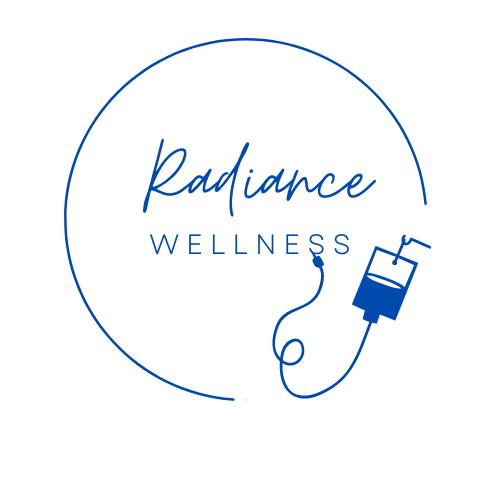FAQ - Cryotherapy
What is cryotherapy?
Cryotherapy is short-term (1- to 3-minute) exposure to extreme cold: -130 to -184 degrees Fahrenheit.
When you step into the cryosauna, your body (from the neck down) will be enveloped by nitrogen gas, giving off a dry chill and rapidly lowering the skin’s surface temperature.
This exposure to extreme cold stimulates skin sensors, activating a central nervous system response. That, in turn, releases endorphins -- the body’s natural mood elevators and pain inhibitors.
The cold temperature also signals your brain to go into survival mode. In this mode, your blood vessels in the skin and periphery shrink and blood circulation to your organs improves to help keep them warm.
All the while, this process is getting rid of toxins and enriching your blood with the oxygen and nutrients to help stimulate cellular regeneration, decrease inflammation and clear toxins.
What do I wear?
For your cryotherapy session, you will be asked to disrobe to your undergarments and put on thermal socks, rubber booties and gloves with a robe. We’ll provide everything except the undergarments!
Ladies, you can opt to keep your sports bra on (no underwire or metal clasps).
You will also be asked to remove any jewelry or metal objects.
What should I expect for a cryotherapy session?
First you change out of your clothes into a comfortable robe, thermal socks, rubber booties, gloves and you can keep your undergarments on (but no metal!).
The authorized cryosauna technician will place risers for you to stand upon so that your head and neck are not exposed to the cold vapor. They will then pre-cool the unit, you’ll step in, close the door and hand over your robe. The technician hits “start” and the dry nitrogen vapor will start to flow.
Throughout the 1- to 3-minute session, you’ll rotate around and try to keep your mind off of the chill! You might hear beeping every 30 seconds, which is simply a safety mechanism for the unit and technician.
Once your session is over, the technician will hand you your robe in the sauna, and you can exit the cryosauna and get dressed again.
Is there research that proves cryotherapy is effective?
Check out this segment on The Doctors, where Dr. Robert Sears steps into a cryosauna himself and explains the benefits.
Medical studies include:
Is cryotherapy new?
No, cryotherapy was invented in Japan in 1978 by a physician looking to treat rheumatoid arthritis. It’s been researched and refined ever since.
Who uses cryotherapy?
Elite athletes and pro-teams use cryotherapy for faster muscle and injury recovery. Weekend warriors use it to manage pain and inflammation, for an increase in energy, and stress-related conditions. Those who use it say they can train harder as a result.
Cryotherapy is a fast and effective alternative to traditional ice baths.
Even if you’re not an athlete, you could benefit from cryotherapy, too! Cryotherapy is great for those who have:
- Depression or looking to improve mental wellbeing
- Joint & muscle soreness
- Chronic pain
- Stress
- Fatigue
- Low libido
Why shouldn’t I just ice an injury or take an ice bath?
Instead of icing just one area or steeping in an ice bath for an uncomfortable 20 minutes, individuals can just step into the cryosauna and experience more far-reaching benefits of exposure to cold in just a few minutes. Plus, the vapor in the cryosauna offers a temporary, superficial chill versus the ice bath’s bone-chilling freezing cold.
I’ve heard people use cryotherapy for anti-aging - is that true?
Yes! Several people, including A-list celebrities (whose job it is to look youthful) use cryotherapy as part of their anti-aging regimens since it helps with cellular regeneration, collagen production and circulation.
Once you leave the cryosauna, your newly-enriched oxygenated blood courses through your body, which helps the body’s natural ability to produce collagen.
Collagen is the most abundant protein in our body, found in muscles, bones, skin and tendons. It’s what makes our skin elastic (youthful!), strong and helps regenerate new skin cells. As we age, our collagen production slows down. Toxins like smoking and sun exposure also deplete collagen levels.
How long are the sessions?
Ours are 1- to 3-minutes long.
How cold is it in the cryosauna?
It ranges from -130 to -184 degrees Fahrenheit, depending on your comfort level.
Is it safe?
Yes. The cryosauna is always operated and monitored by a trained staff member.
Are there side effects?
Generally, cryotherapy is well-tolerated with minimal side effects, but you may experience changes in your blood pressure during the procedure, an allergic reaction to extreme cold (which is very rare), anxiety, claustrophobia, or triggering some viral conditions due to immune system stimulation.
Is cryotherapy the same as cryogenics?
No, cryotherapy is not preserving your body once you pass.
Does cryotherapy help you burn calories?
Studies have shown that cryotherapy helps burn 500-800 extra calories over the course of the day after one session.
Is there an age requirement for cryotherapy?
The cryosauna is designed for adults. For those under age 18, parental consent is required. For those under age 18, please consult with our medical staff and your primary care physician prior to trying cryotherapy.
Are there restrictions on those who can use cryotherapy?
The following conditions are contraindicated for cryotherapy: Pregnancy, severe uncontrolled hypertension (BP> 180/100), acute or recent myocardial infarction (heart attack within 6 months), narrowing of valves, crescent-shaped aorta and mitral valve, unstable angina pectoris, arrhythmias, symptomatic cardiovascular disease, cardiac pacemaker, peripheral arterial occlusive disease, venous thrombosis, acute or recent cerebrovascular accident (stroke: must be cleared for exercise), uncontrolled seizures, Raynaud's syndrome, fever, tumor disease, symptomatic lung disorders, bleeding disorders, severe anemia, infection, claustrophobia, cold allergy, acute kidney and urinary tract diseases, incontinence, age less than 18 years (parental consent required).
